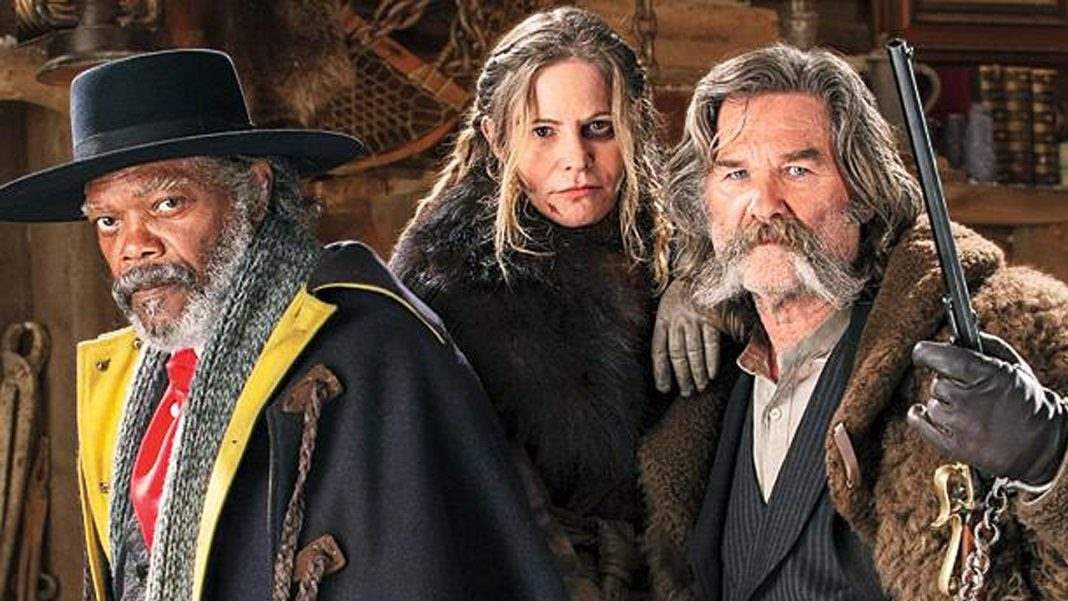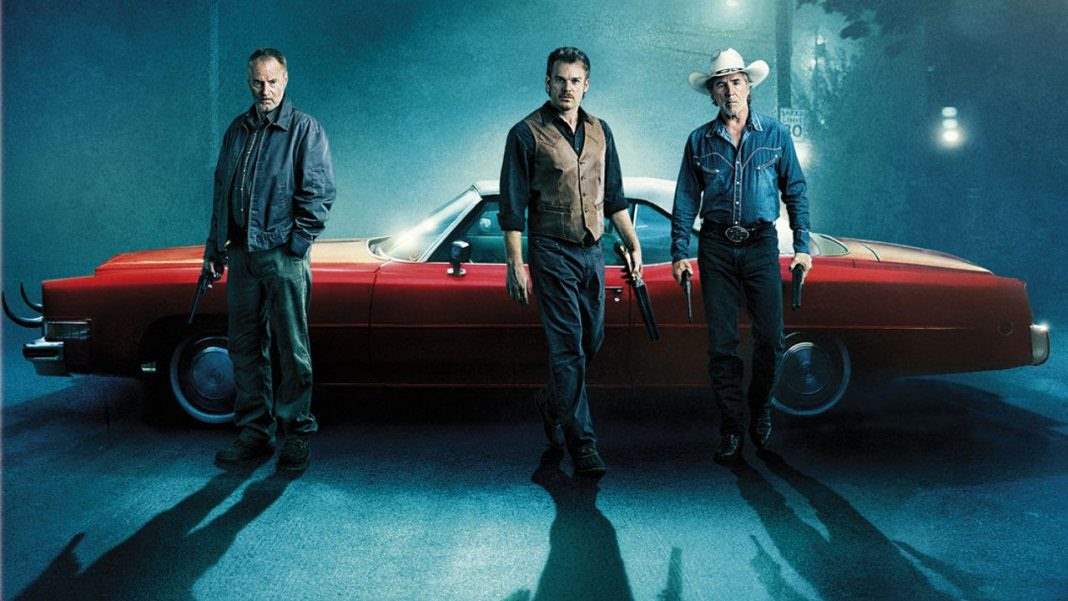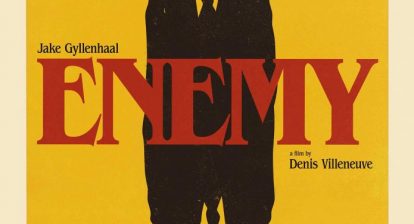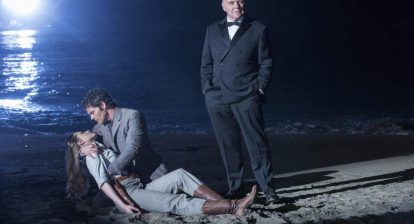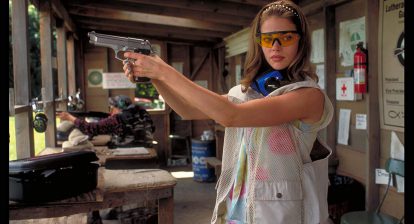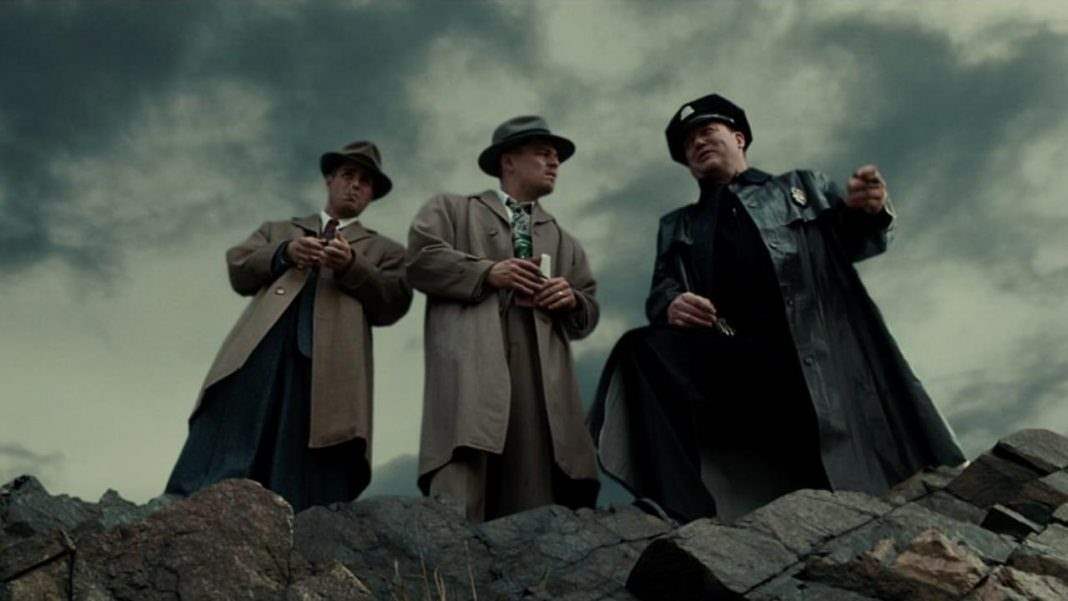Horror is evolving as a genre. Although your local multiplex is still loaded with the usual contenders, look a bit closer and you’ll find the latest drama, thriller, or crime offering is closer to horror than you might expect. In this bi-weekly series, Joey Keogh presents a film not generally classified as horror and argues why it exhibits the qualities of a great flight flick, and therefore deserves the attention of fans as an example of Not Quite Horror. This week, it’s the highly-anticipated eighth film by Quentin Tarantino, bloody western The Hateful Eight.
Tarantino really needs to just go ahead and make a straight horror movie already. Hell, even his buddy Kevin Smith, who seemed a far less likely candidate for this kind of thing, turned to the dark side a while ago (a quote from Tarantino was emblazoned on the cover of Smith’s first horror movie, Red State).
And just last year, everyone’s favourite movie nerd was giving his (unsolicited) notes on the most well-loved horror release of 2015, It Follows. It’s about time we got to see what Tarantino could do with something properly scary but, for now, his consistently impressive dabbles in Not Quite Horror will do.
Latest effort The Hateful Eight is his nastiest and most thrilling offering yet, a lengthy, visceral descent into madness, the basic premise of which sees eight reprehensible low-lives stuck in a room together and left to tear each other apart (often quite literally).
It’s a bit like a really weird, fucked up game of Clue (Cluedo for our European readers).
The Thing, obviously, looms large, from the snow-capped setting to the claustrophobic central conceit to the casting of Kurt Russell in the lead role. However, the beast in The Hateful Eight is sickeningly, satisfyingly human. Early on, Tarantino even suggests the story may devolve into full-on horror territory with a sequence involving the drawing of lines to an outhouse (itself a nod to Carpenter’s classic).
But he isn’t concerned with one-note characters being picked off one by one by some unknown entity, rather the divisive filmmaker is more interested in establishing these people as the most hideous, disgusting assholes we could possibly imagine and then forcing us to side with one or all of them.

Seemingly constantly bored, bemused or annoyed-often all at once-Russell’s John “The Hangman” Ruth (accurately described as a “hyena” by another character) doles out regular punishments to his charge, with frequently bloody results. Yet he and Leigh’s Daisy make for a kind of sweet odd couple at times, even when she’s beaten black and blue.
The violence here is gory but not sustained, most of it saved for the blisteringly bloody final act. Early on Ruth clocks his prisoner square in the nose, but she bounces back almost immediately, the incident telling us far more about her than him. Daisy is a loose cannon, even when she’s in shackles, twisting and gurning like a mad dog on a leash.
A tense, third act showdown sees her coated in the red stuff, Carrie-style (one of many, nerdy horror nods), but she’s triumphant, emboldened–she glorifies in the carnage. In a lot of ways, Daisy signifies The Hateful Eight‘s attitude to violence: It’s silly, messy, over-the-top but never disturbing or too intense.
When a character gets his head blown up, for instance, it provokes a moment of shocked laughter. Likewise, a flashback to an alleged sexual assault, although stomach-churning, is discomfortingly funny, chiefly because it’s so outlandish–not to mention it comes courtesy of the closest thing to a hero this film has.
Accusations of misogyny and racism kind of fly out the window when you consider everyone is fair game here. Whether it’s Bruce Dern’s hideous General or Sam Jackson’s (giving the performance of his already illustrious career) glorious Major, who consistently fights back against the inherent racism of his cohorts, particularly during a speech in which he argues: “The only time black folks are safe is when white folks are disarmed”
Indeed, the scariest element of The Hateful Eight is how topical it is–arguably even more so now than the period in which it is set. Tarantino, a vocal supporter of the Black Lives Matter movement, has spoken in interviews about how Django Unchained became more socially relevant as it developed, and it’s easy to see how this has happened with The Hateful Eight too.
Tarantino’s greatest triumph with this film is in forcing us to empathise with his characters. As morally reprehensible as they are, it’s clear the maestro adores each and every one of them. He delights in trapping them in a room together and leaving them to duke it out. And he’s asking us to delight in it too, even when it makes us uncomfortable.
 It helps there isn’t a dud among the cast. Alongside Jason Leigh, Jackson and Russell, Walton Goggins (who horror fans will recognise from Rob Zombie’s House Of 1000 Corpses) plays the hilariously incompetent incoming sheriff, who shouts things like “I do dec-layuuuure!”, in a scene-stealing role and whose hilarity is rivalled only by Tarantino regular Tim Roth as an English gent who actually utters the words “jolly good” at one stage.
It helps there isn’t a dud among the cast. Alongside Jason Leigh, Jackson and Russell, Walton Goggins (who horror fans will recognise from Rob Zombie’s House Of 1000 Corpses) plays the hilariously incompetent incoming sheriff, who shouts things like “I do dec-layuuuure!”, in a scene-stealing role and whose hilarity is rivalled only by Tarantino regular Tim Roth as an English gent who actually utters the words “jolly good” at one stage.
Roth is one of several ties to Tarantino’s debut feature, Reservoir Dogs, itself a great example of Not Quite Horror. The single setting, considerable bloodshed, prolific use of the n-word, vague mystery elements (it’s more whosgonnadoit than whodunit) and whip-smart dialogue all recall his breakthrough. But The Hateful Eight sees the divisive filmmaker on more restrained form.
There have been calls for the movie nerd in Tarantino to stop making films, but this is one case in which that side of him (the more dominant side, presumably) really works, where his indulgences complement rather than grate. This is a movie that sees someone’s arm lopped off and then dragged around the place, totally played for laughs. And yet, the ending is resolutely morose and downbeat.
It’s worth noting that Tarantino, in his own twisted way, probably intended for it to be hopeful but the final stand is the most genuinely frightening moment of the entire film and it leaves a question mark over everything that’s come before. In a normal movie, this would be a criticism, but here it’s a triumph of imagination, bravery and skill.
The Hateful Eight is an ingenious example of Not Quite Horror, the kind of inescapably tense movie you can sink into like a comfy armchair (in which someone was probably murdered not too long ago). Ennio Morricone’s score is so evocative, so brilliantly creepy, it negates the breathtaking visuals. In many instances, it doesn’t supplement the atmosphere, it creates it.
Of course, its inclusion could be taken as just another allusion to The Thing, but it’s one of many, well-placed horror nods hidden in an original, inventive and very clever film that teases us even more about what Tarantino could do if he went really, properly scary.
Hopefully we don’t have too much longer to wait, but for the moment, The Hateful Eight will do nicely.
